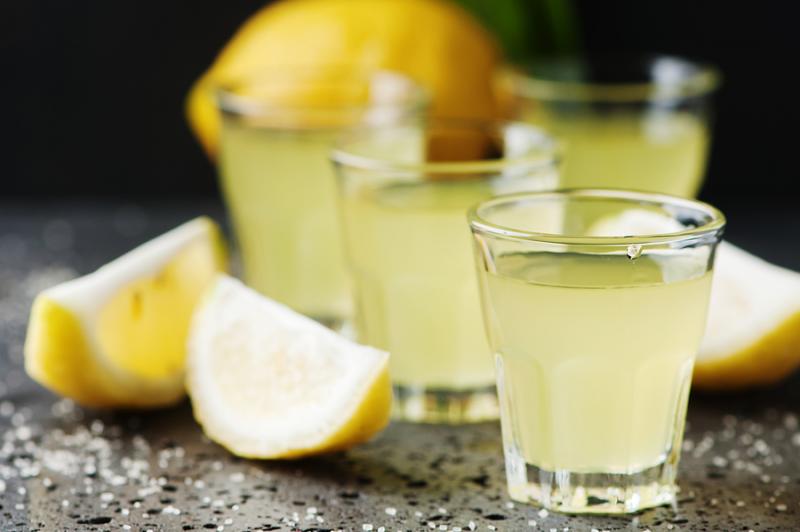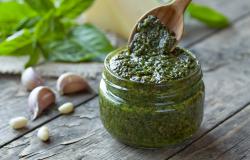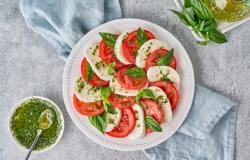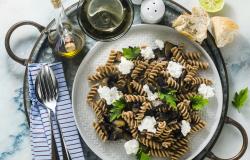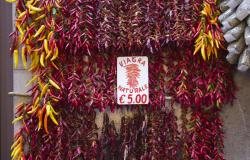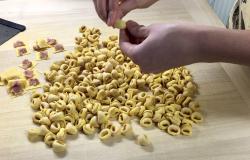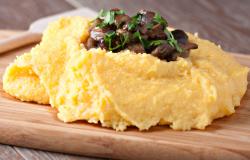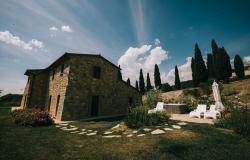Italians like to linger at the table, both during and after a meal. Dessert is leisurely and often served in three parts. First the sweet itself, which is accompanied by a dessert wine or liqueur, then espresso or coffee, and finally a digestivo, like grappa or amaro.
Dessert wines and little sweet nibbles are brought out as a way to keep guests at the table, to keep conversation going. Unlike here in the States, in Italy coffee or tea are served only after dessert. In fact, it’s considered rude for a restaurant to rush customers by setting down coffee with dessert.
For me, one of the biggest differences between Italy and the US is the restaurant experience. In Italy when I sit down to dinner in a restaurant, that table is mine for the night. I am never rushed.
The courses are served in a leisurely fashion---not only because the food in Italy is usually made to order, but because they want us to have time between courses to digest to build anticipation and an appetite for the next course. My plate isn’t removed until everyone else at the table has also finished eating.
I especially like the after-dessert digestivo tradition in Italy.
My favorites are the homemade ones, brought out by the chef himself and poured with a flourish as a final culinary gift. I’ve had all kinds of delicious concoctions and the chefs shared their recipes generously.
Glossary of a few of the many Italian dessert wines and liqueurs
Alchermes
Alchermes, a spicy-sweet bright red liqueur, has been popular in Italy since the Renaissance. Pope Clemente VII considered it healthful going so far as to call it “the elixir of long life.” Alchermes was supposedly brought to France by Maria de’ Medici where it was called “liquore de’ Medici.”
Originally the shell of the cochineal bug was used to color the liqueur, but today it’s made with artificial colorings. It is a classic dessert ingredient in many Italian desserts including zuppa inglese and pesche dolci, faux peach cookies.
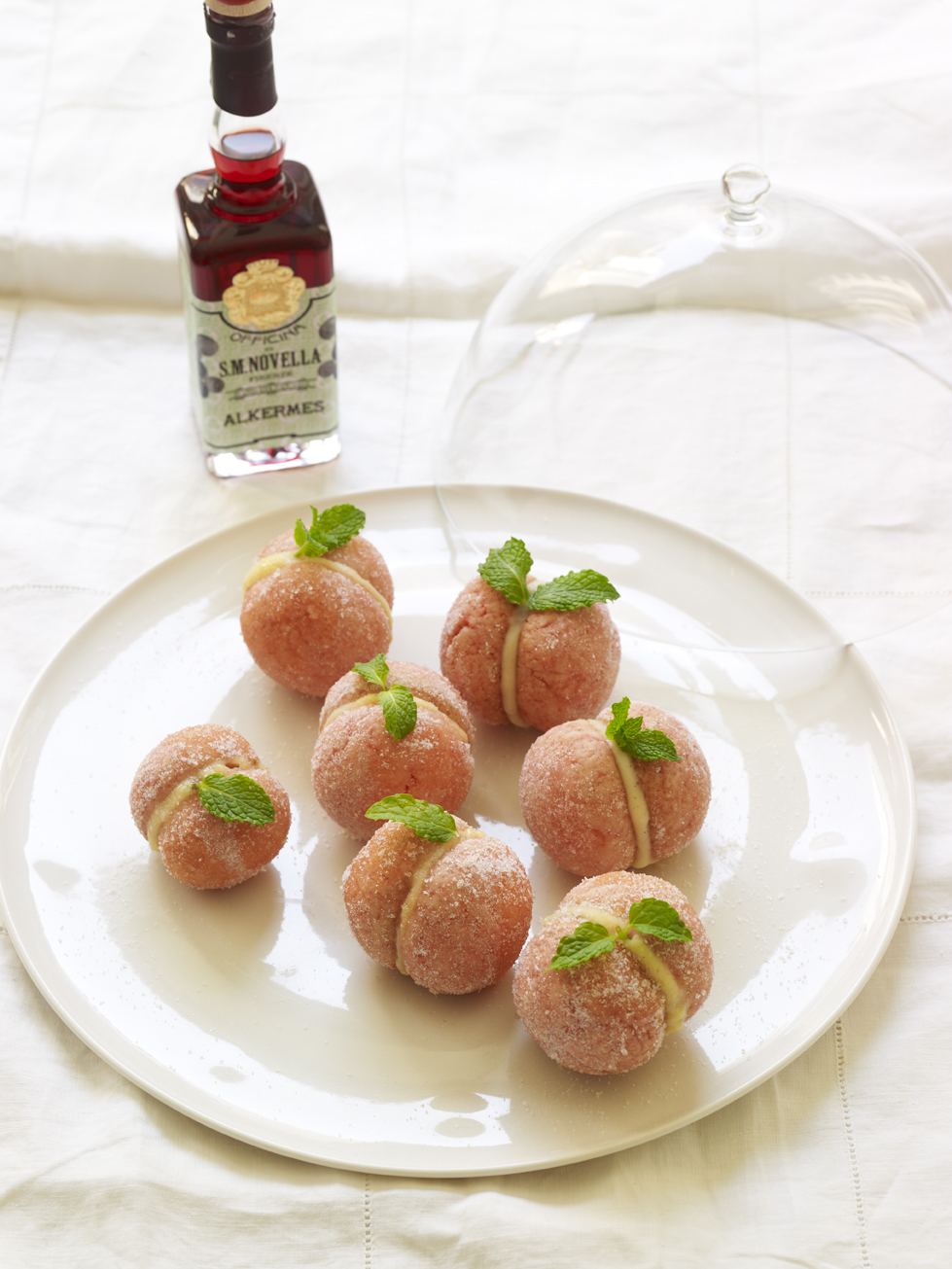
Aleatico dell’ Elba Passito
An exceptional dessert wine with lovely aroma of roses and dark berries awarded the special denominazione d’origine controllata e garantita, DOCG, designation.
Amaretto
Amaretto, “little bitter,” is a sweet almond-flavored liqueur cordial. Amaretto is an ingredient in hundreds of dessert recipes and is also paired with all sorts of Italian sweets, especially crunchy amaretti cookies. One of Italy’s best selling brands of amaretto is Disaronno Originale.
Amaro
Amaro is the term for a general category of bittersweet digestive, after-dinner drinks thought to aid digestion. Amaro, which means “bitter,” are generally made from various spices, herbs, fruits and alcohol. Popular since the Middle Ages, monks originally created these drinks as a medicinal remedy. There are hundreds, if not thousands, of different types of Amaro in Italy, with each region, city, and even village claiming its own local specialty.
Asti-DOCG
Asti, a sparkling dessert wine, is made with the moscato bianco grapes from the Langhe, Monferrato and Roero areas of Piedmont.
Asti is a DOCG wine, meaning it is officially certified and guaranteed as to process and origin. In Italian, Denominazione di Origine Controllata e Garantita.
Asti, an easy-to-drink wine, has a moderate alcohol content of 7 to 9.5%. In Italy it is served in bowl-shaped classes, rather than the thinner champagne flutes. The thinking is that the narrow flute exaggerates Asti’s sweetness, concentrating the liquid on the tip of the tongue, where the sweet taste buds are situated. It is classically paired with panettone at holiday time.
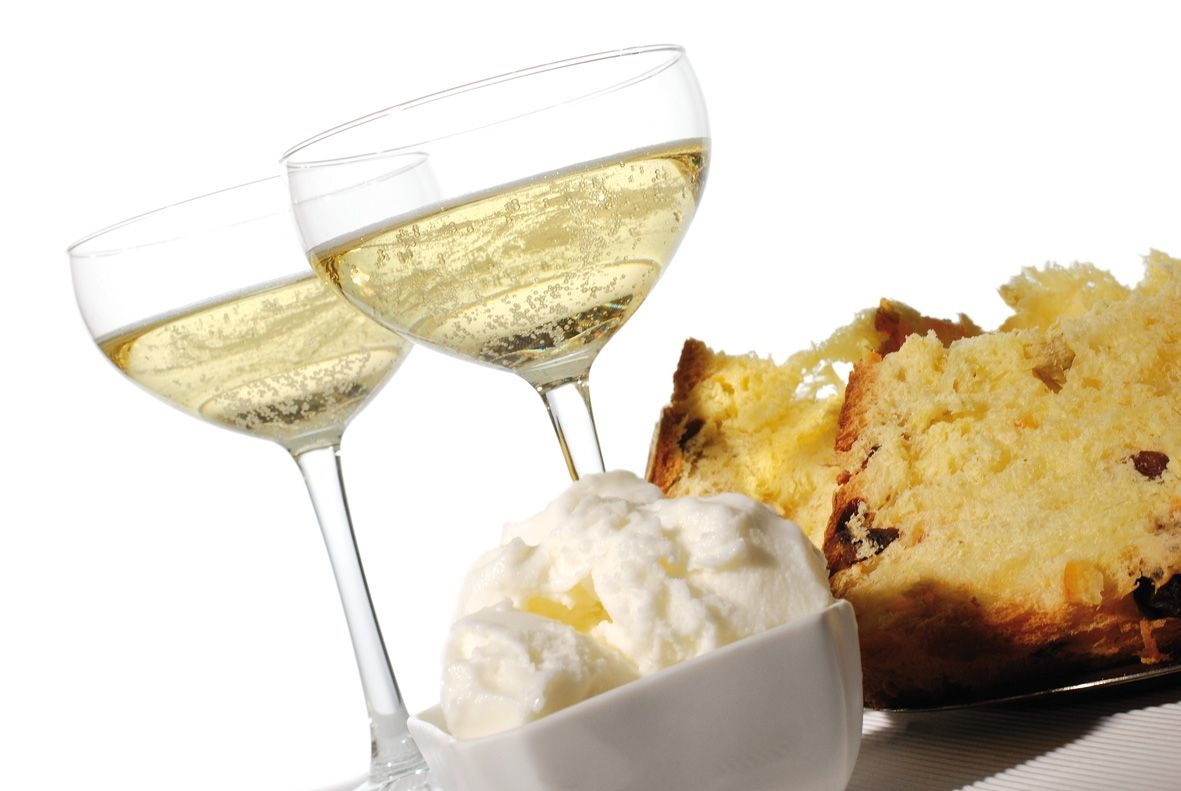
Asti Moscato
A dessert wine made in the Asti region of Piedmont using moscato grapes. It’s less bubbly than Asti-Spumante.
Barolo Chinato
An after-dinner digestivo from the Piedmont region, made with Barolo wine that has been steeped with different spices such as cinnamon, coriander, mint, and vanilla. It is a very smooth, aromatic beverage that pairs beautifully with chocolate.
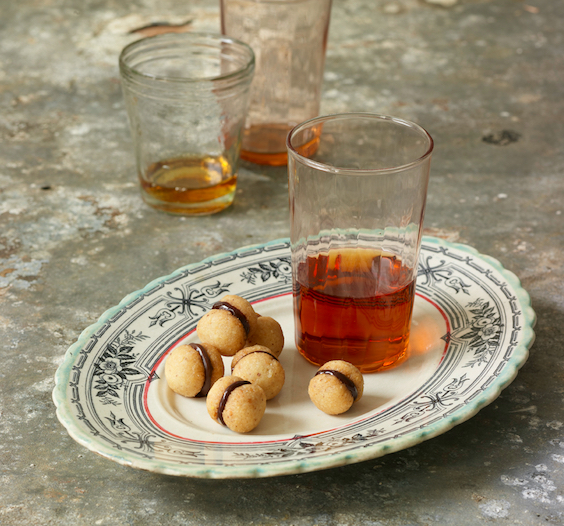
Brachetto d’Acqui
Red sparkling dessert wine produced in the Piedmont. It is a blend of Aleatico and Moscato Nero grapes.
Frangelico
Hazelnut liqueur in a trademarked bottle shaped like a monk. Great for both drinking and as a desserts ingredient.
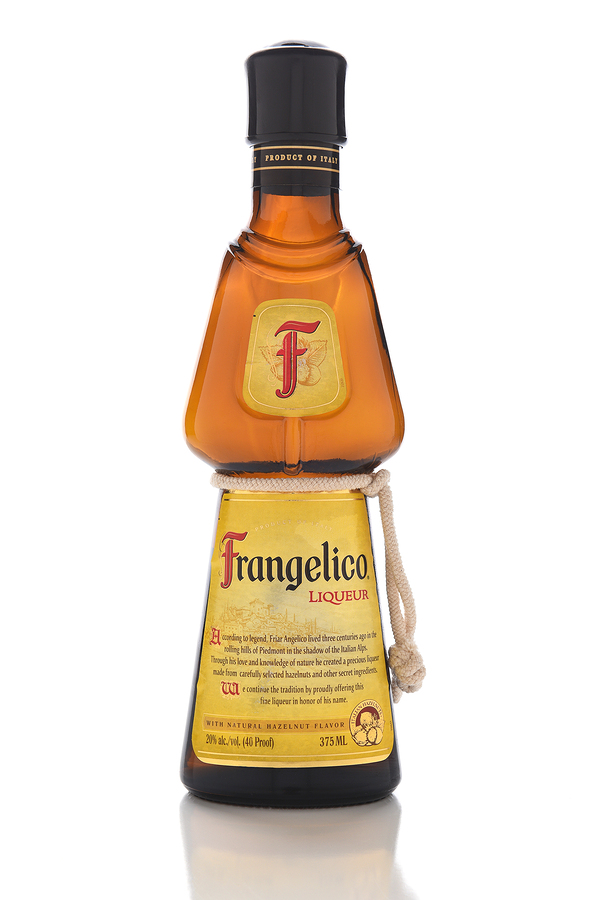
Galliano
Bright yellow liqueur, that’s a mix of dozens of herbs and spices. First made in Livorno in 1896 and named for 19th century Italian war hero Giuseppe Galliano. Used in cocktails, and as an after-dinner digestivo, it’s also a terrific flavoring for various dessert recipes.
Grappa
Grappa is a fragrant spirit, 75-120 proof, made from the grape skins and other solids left-over from the winemaking process. The name, grappa, most likely comes from the Italian for bunch of grapes, grappolo d’uva. In Italy grappa is enjoyed after dessert, served in small, tulip-shaped or short grappa glasses. It is also exceptional paired with Italian chocolates. A splash of grappa is often added to espresso to create caffé corretto.
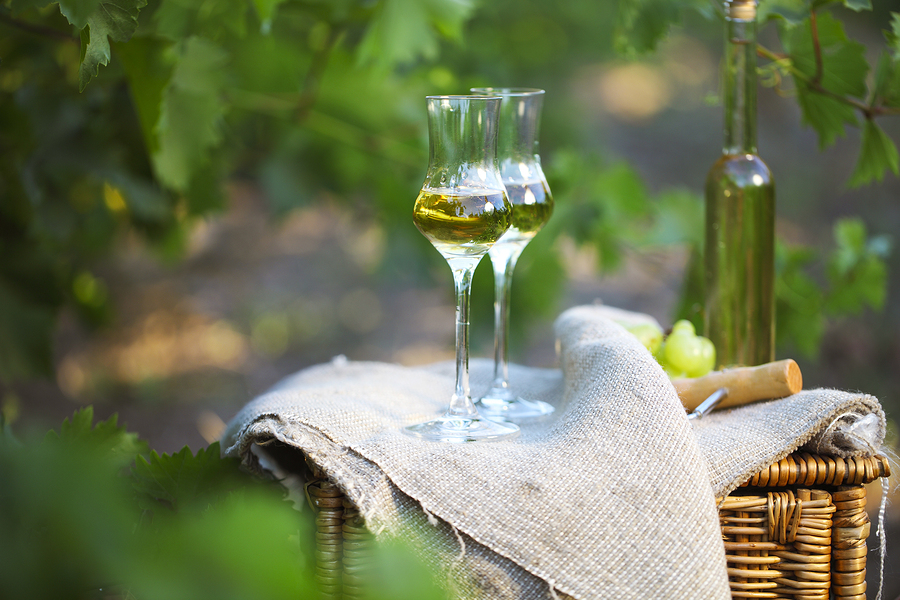
Limoncello
A lemon liqueur from the Amalfi Coast, Calabria, and Sicily. Made by steeping lemon peels in alcohol and sugar, it can be drunk at room temperature or icy cold. Wonderful with Italian cookies, pastries, and cakes, limoncello is also an ingredient in many desserts.
Malvasia delle Lipari
An amber-colored DOC dessert wine from Sicily with an apricot-honey taste and lovely aroma.
Maraschino liqueur
A clear cherry liqueur made from northern Italian marasca cherries (not the same as maraschino cherries found in supermarkets). Used in many traditional Italian desserts.
Marsala
Marsala is a DOC golden-colored fortified wine made with grapes grown in the Marsala region of Sicily. Marsala is made both sweet and dry. The dry is enjoyed chilled as an aperitif, while the sweet is sipped at room temperature as a dessert wine.
Marsala is used extensively in Italian cooking, especially in making sweets such as the classic zabaglione.
Moscadello di Montalcino
A DOC, Denomination of Controlled Origin, dessert wine from the Montalcino region of Tuscany made with aromatic white muscat grapes.
It is produced in three versions: still, sparkling and late-harvest.
Nocino
Nocino is a dark colored digestivo, made from unripe green walnuts. Traditionally the walnuts are gathered on the eve of the Feast of San Giovanni, June 24th, on La Notte delle Vergini Scalze, “the evening of the barefoot virgins.”

Passito
Passito is dessert wine made by pressing partially dried grapes, dried to concentrate their sugar and flavor.
Passito di Pantelleria
One of Italy’s most acclaimed passito wines. In 1971 this fine dessert wine from Sicly became only the 3rd Italian wine to receive DOC status. It has a lovely bouquet and velvety sweet yet crisp flavor.
Sambuca
A colorless digestivo liqueur flavored with star anise. Sambuca is splashed in coffee, or served neat and with topped with 3 toasted espresso beans called con la mosca, “with flies”. Besides giving a little caffeine kick, chewing on the beans highlight Sambuca’s flavor.
Sassolino
A liqueur from the town of Sassolino in Modena, flavored with star anise, it’s an ingredient in many Emilia desserts.
Strega liqueur
Strega, “witch,” is a yellow liqueur made from over 70 ingredients including saffron, which gives it its color. Used as a digestivo and in dessert recipes.
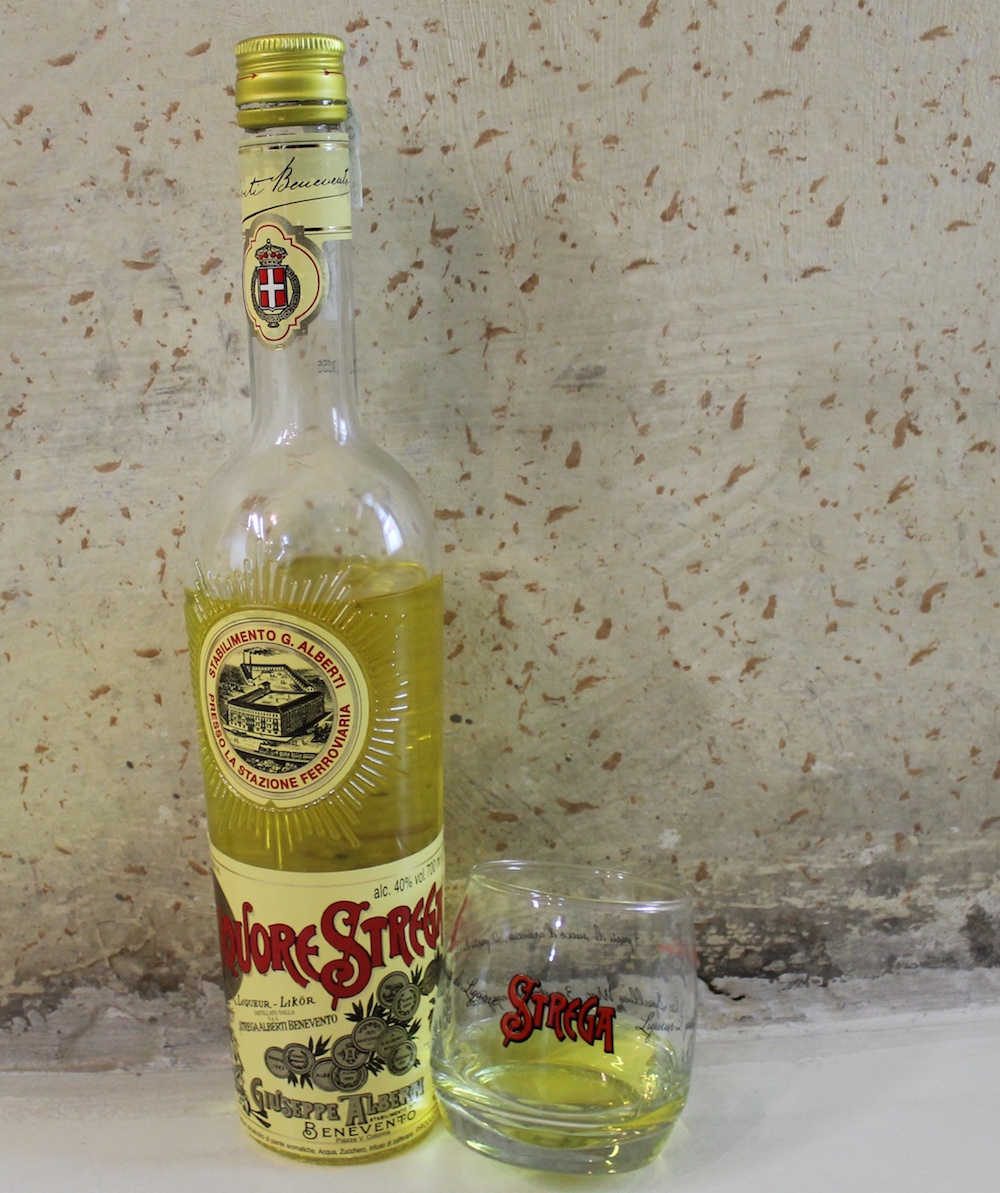
Vin Santo
Vin Santo, “holy wine,” is a smooth amber-colored wine made from Malvasia and Trebbiano grapes. Although made in many parts of Italy, it is most often associated with Tuscany where it is often paired with cantucci, the area’s crunchy almond biscotti.

Limoncello
Makes about 1 1/4 quarts
Keep it in the freezer and serve it icy cold. Fabulous with dessert and also great splashed on fresh fruit salad or ice cream.
6 lemons
2 cups pure alcohol or vodka
2 cups granulated sugar, plus more to taste
Using a vegetable peeler, peel the yellow zest from the lemons, in long strips. Put the peels and alcohol into a 1 1/2 to 2 -quart-sized glass container with an air -tight lid, such as a Mason jar. Seal and keep for 2 weeks in a cool, dark place.
At the 2-week point, bring 3 cups of water to a boil in a saucepan then stir in the sugar. Simmer until the sugar melts completely, then remove from the heat, and allow to cool. Stir the cooled sugar syrup into the alcohol mixture. Taste, and add more sugar if you like. Seal, and store for another 2 weeks in a cool dark place then strain the mixture through a fine mesh strainer, discarding the peels.
Store in the freezer. Serve icy cold.
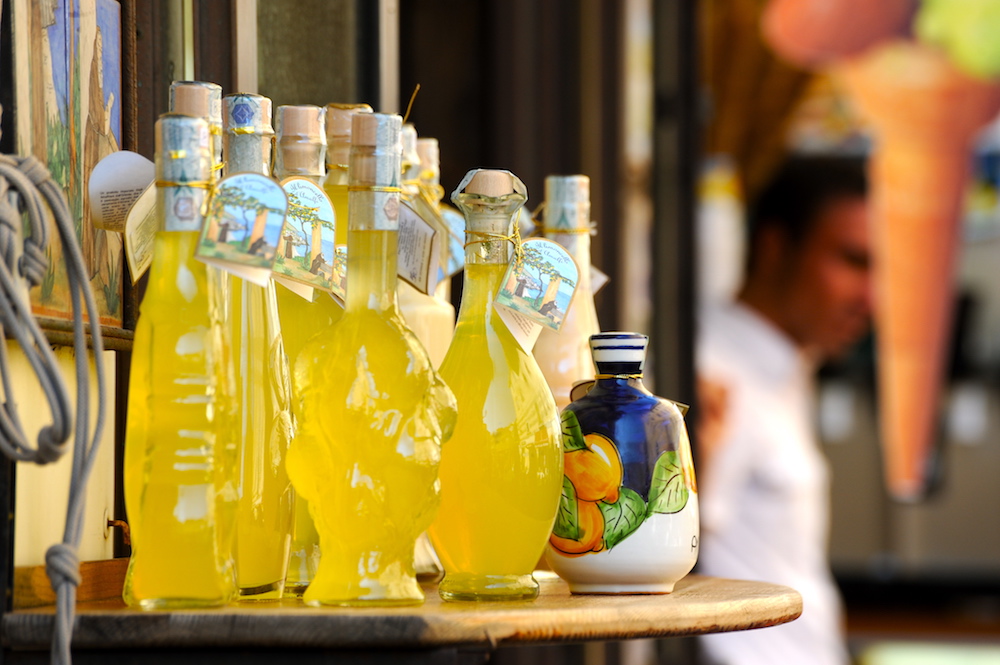
VARIATION:
Crema di Limoncello
Makes about 1 1/2 quarts
A creamy version of limoncello. Much more delicious homemade than what’s available commercially. It’s like a grown up lemon creamcicle!
6 lemons
2 cups pure alcohol or vodka
2 cups of unsweetened condensed skim milk
1 vanilla bean, cut into pieces
2 cups granulated sugar, plus more to taste
1 cup heavy cream
Using a vegetable peeler, peel the yellow zest from the lemons, in long strips. Put the peels and alcohol into a 1 1/2 to 2 -quart-sized glass container with an air -tight lid, such as a Mason jar. Seal and keep for 2 weeks in a cool, dark place.
At the 2-week point, bring the condensed milk and vanilla bean to a low boil in a saucepan then stir in the sugar. Simmer until the sugar melts completely, then remove from the heat, and allow to cool.
Stir the cooled mixture and the heavy cream into the alcohol mixture. Taste, and add more sugar if you like.
Seal, and store for another 2 weeks in the refrigerator, then strain the mixture through a fine mesh strainer, discarding the peels and vanilla bean.
Seal, and store in the freezer or refrigerator. Shake gently before serving. Serve cold.

Nocino: Walnut Digestivo
Makes about 1 1/2 quarts
It’s certainly worth a little asking around to order unripe walnuts or you pick your own! Their bright green rind has a fantastic fragrance and flavor.
20 green walnuts, with husks
32 ounces pure 95% alcohol or vodka, grappa, or other neutral spirit
1 2-inch piece of cinnamon
6 whole cloves
Zest of 1 small lemon
1 cup dry white wine
2 cups granulated sugar, plus more to taste
Wash and dry the walnut husks. Cut them in quarters (they will be soft as the hard outer shell we normally associate with walnuts hasn’t formed yet).
Put the walnuts, alcohol, cinnamon, cloves, lemon zest and wine into a large container with a closeable top and stir well. Seal it tightly and place in a sunny spot for at least 40 days, and preferably 3 months, shaking it once daily to recombine all the ingredients.
Bring the sugar and 1 cup of bottled or filtered water to a boil. Allow to cool. Strain the liquid through a paper filter or fine mesh strainer and stir in the sugar syrup. Taste and add more sugar or water, if you like. Put into a clean, sealable container and allow to rest for at least 2 months. It only improves with age!
Variations:
Nocino al caffé: add 10 to 12 espresso coffee beans with the other ingredients.
Nocino dei Frati: add 3 mace blades, several slices of nutmeg and 1 vanilla bean in addition to the other ingredients.
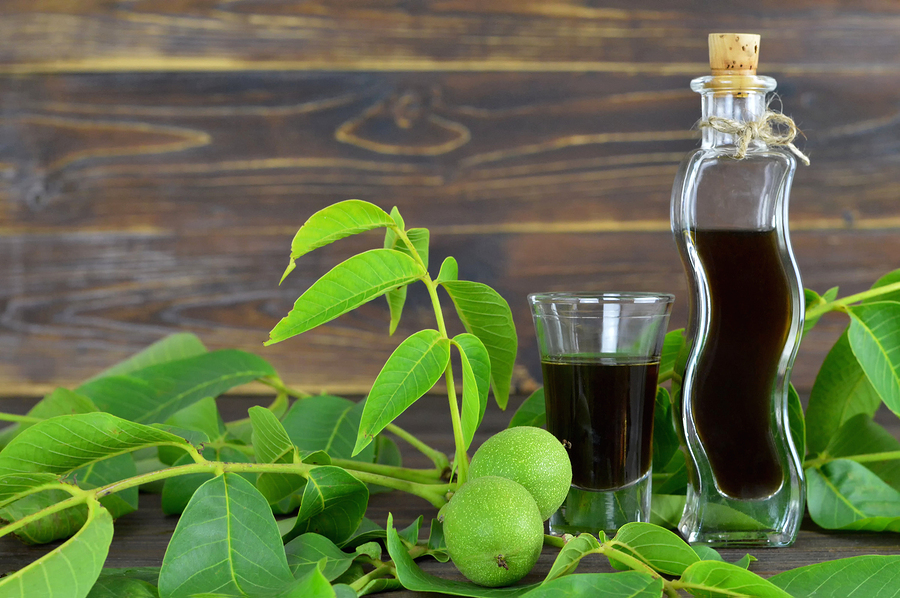
Anything Goes Grappa
Grappa Aromatizzata
One of my favorite parts of visiting Italy is trying all the amazing after dinner digestive my friends make. I’ve had grappa infused with just about every herb, spice and fruit imaginable. They’re all good, but the secret to the really great ones is not to mix too many flavors together, shoot for a max of 3.
Some of my favorite combinations are: fig-honey; celery-lemon; pear-basil; fresh laurel-lemon verbena; and rosemary-apple-chamomile. You can strain the ingredients after a month or two, or leave them in. I prefer them left in and served in a decorative decanter.
One 750 ml bottle grappa
1/2 cup granulated sugar or honey
Possible infusion ingredients:
1 sliced orange or 2 lemons or 4 mandarins
Chopped dried figs or fresh sliced peaches, pears, apples, cherries
1/4 to 1/2 cup whole spices such as anise, cinnamon, cardamom, cloves, or red chili peppers
1 cup fresh herbs such as bay leaf, chamomile, rosemary, mint or lemon verbena
Combine the grappa, sugar and infusion ingredients in a container with a sealable top. Allow to infuse for at least 1 month before serving. Add more sugar to taste, if you like.
